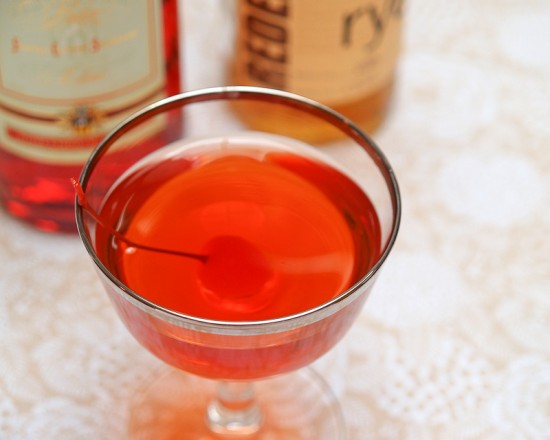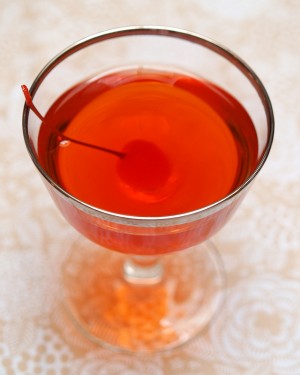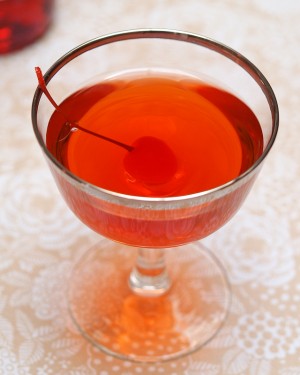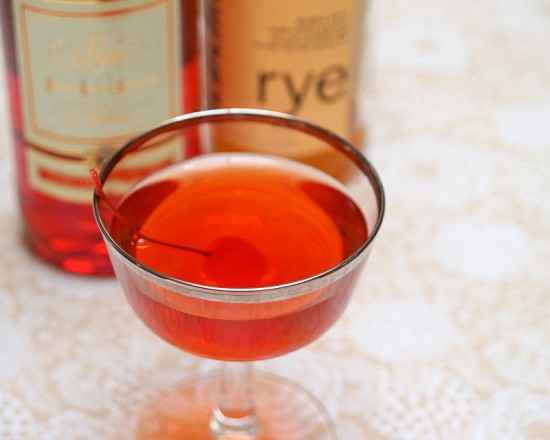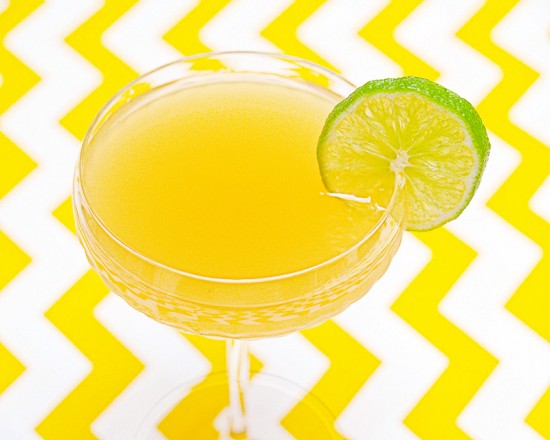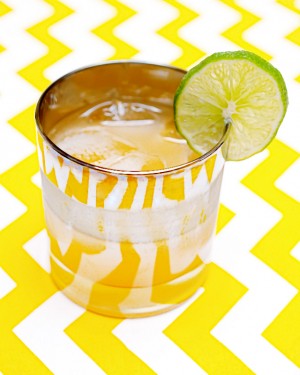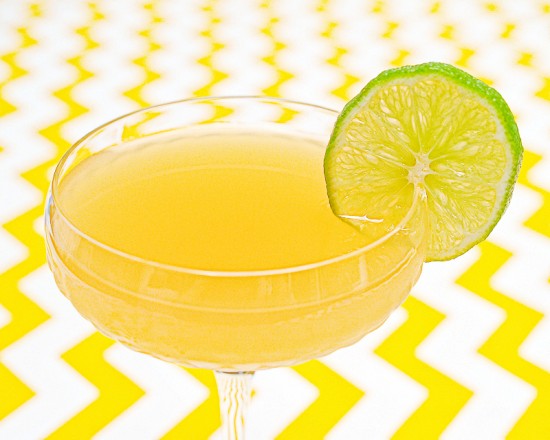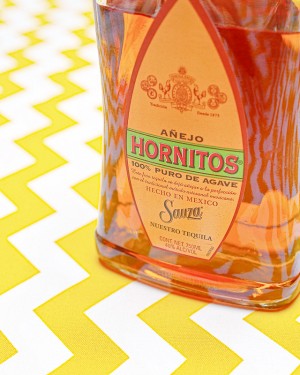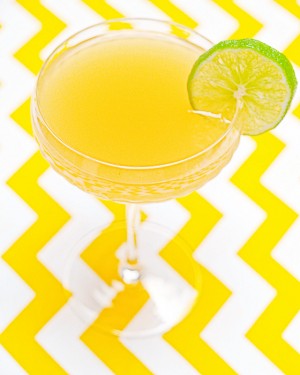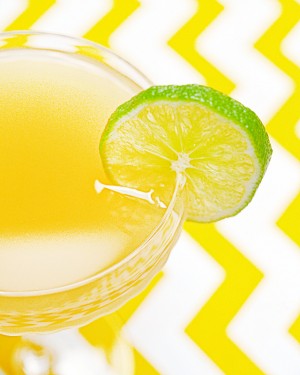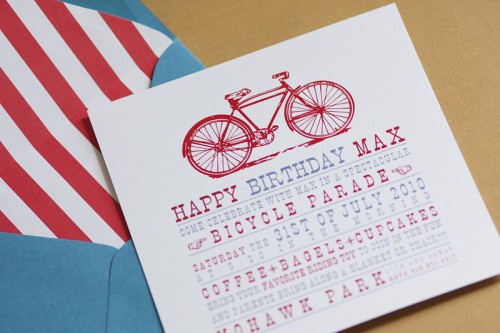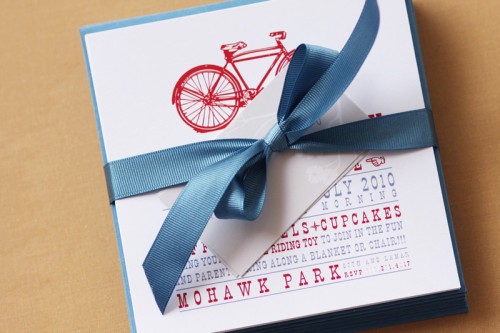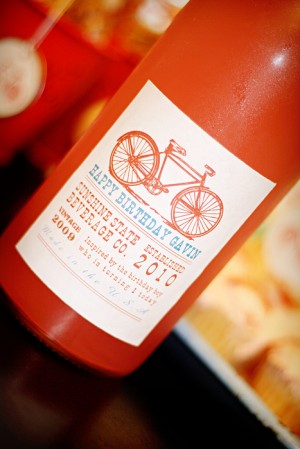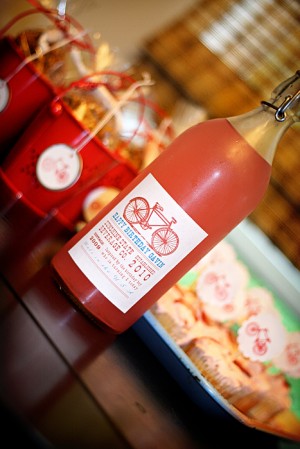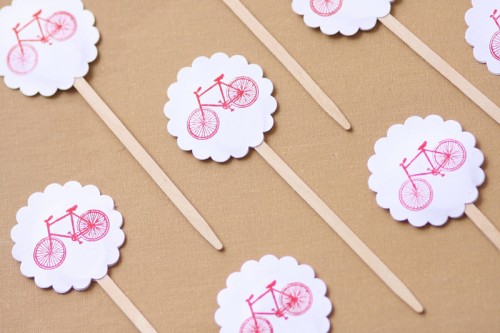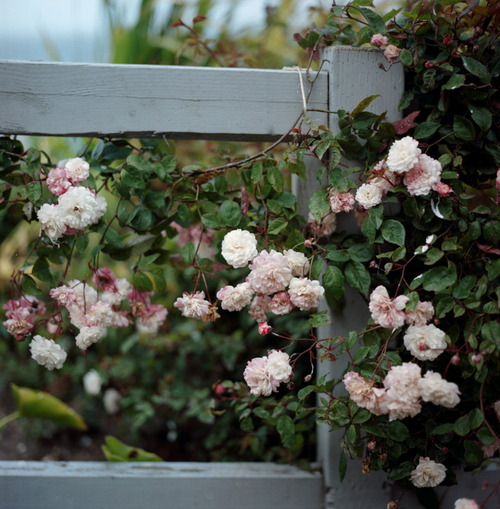I am not the biggest fan of the Manhattan. Â This is something of a terrible secret to confess in the world of cocktail aficionados. Â The Manhattan is as classic a cocktail as they come; it’s a quintessentially masculine cocktail. Â But it’s a little too rich for my taste. Â So, I played around until I found a version I loved, which I dubbed the Bittersweet Manhattan. Â Except it’s hard to invent anything truly new in the world of cocktails, and I found out that my recipe goes back at least to the 1920s as the Boulevardier. Â Oh well. Â It’s delicious no matter what you call it.
Read below for the full recipe!
The Boulevardier
2 oz Rye Whiskey
1/2 oz Sweet Vermouth
1/2 oz Campari
2 Dashes Bitters (optional)
Combine the ingredients and stir well with ice, then strain into a chilled cocktail glass or serve with an ample lump of ice. Â Garnish with a lemon twist and enjoy.
A Manhattan, made with Rye, sweet vermouth, and bitters, is rich, spicy and oaky, sweet and sharp, icy cold and warming at the same time.  A Boulevardier is a Manhattan made with Campari – a very bitter Italian liqueur – in place of some of the vermouth, and is a little less sweet, a little more rounded, but just as sharp, aromatic, and complex.  With all that Campari, this version really doesn’t need any more bitters (though I found that Fee Brothers Cherry Bitters works well here).  I like a lemon twist for a garnish as the oils help balance the drink; you can go with a twist or the more common Manhattan garnish, a cherry.
Campari is one of the amari – Italian bitters – that also include Aperol, Punt e Mes, Cynar, and Zucca.  To be honest, its bitterness can be overwhelming.  I was ready to write it off until I read Jason Wilson’s fun and fascinating (and slightly self-impressed) spirits memoir Boozehound.  Wilson described happy hour in Milan as sipping amari and soda, munching on tramezzini and prosciutto and polenta covered in gorgonzola with coiffed men in red pants and brown belts or crisp blue suits, and lithe, tan, sunglassed women who drive Vespas in their high heels.  After that, I figured Campari was worth another try.  I may never love it, but I’m a fan when it’s mixed well in cocktails like the Boulevardier.
From whence the Boulevardier?  This drink belongs to Harry McElhone, proprietor of Harry’s New York Bar in Paris (and inventor of the French 75), and first appears in his 1927 cocktail guide.  It probably gets its name from a magazine published by Erskine Gwynne, an American expat who almost certainly patronized Harry’s.  Gwynne’s magazine, which featured the work of the likes of Hemingway, Lewis, Coward, and Joyce, was called – what else – The Boulevardier.
Photo Credits: Nole Garey for Oh So Beautiful Paper

